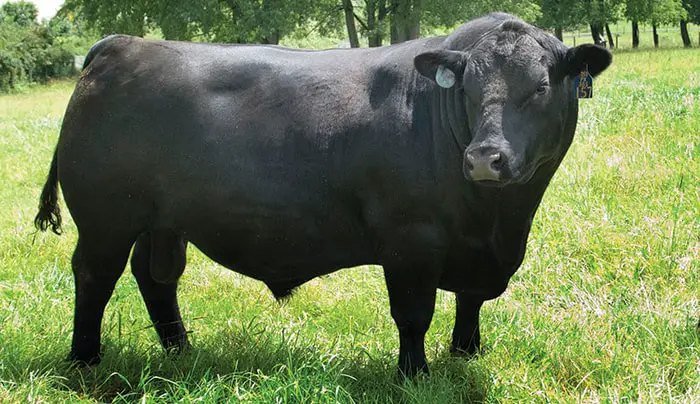Vibriosis in Cattle or Vibrionic abortion or Epizootic abortion is an infectious disease of cattle and sheep characterized by abortion and infertility. This is a venereal disease and is transmitted either at natural service or by artificial insemination. The disease has been reported from different countries where it is widespread in the bovine population and is considered a significant cause of infertility in dairy herds.
Causes of Vibriosis in Cattle
It is a disease that leads to reproductive inefficiency in bovines. The disease is caused by the Campylobacter fetus ( Vibrio fetus). Vibriosis in cattle is spread by infected bulls when they mate susceptible heifers and cows.

Pathogenesis of Vibriosis in Cattle
- Organism persists in the genital tract of cows following natural service or artificial insemination, localizes in newly developing cotyledons, produces necrosis, abortion occurs when the infection becomes extensive.
- In bulls, the infection persists in genital tracts without producing any noticeable damage.
What are the symptoms of Vibriosis?
- The incubation period of the disease is 20-60 days.
- Abortion between the 4th-7th months of gestation is the main sign of infection.
- Poor conception rates.
- Long calving interval.
- Uterine infection.
- Temporary infertility may be characterized by repeat breeding and a prolonged di-estral phase.
- Vibrio bacteria can cause watery diarrhea.
- Abdominal cramping.
- Nausea.
- Vomiting.
- Fever and chills.

Conditions When Vibriosis is Likely to Occur?
- Infected sires or dames moved between or among herds.
- New breeding animals are introduced into a herd.
- Older bulls.
- In heifers and maiden ewes.
- Grain feeding or intensive rotational grazing conditions in sheep.
Pathological Lesions of the Vibriosis
- Necrosis of cotyledons.
- Endometritis.
- Gastric edema in the calf embryo.
- Gastric edema and focal necrotic hepatitis in embryo lamb

Identification and Diagnosis of Vibriosis in Cattle
Diagnosis of the disease will require veterinary consultancy. Vibriosis can be diagnosed based on repeated services.
- Abortion in 4-7 months and clinical signs.
- Isolation of the organism from the aborted fetus’s uterine exudates and stomach contents.
- Cervical-vaginal mucous agglutination test.
- Rapid slide gel diffusion test.
The differential diagnosis of the disease is- Brucellosis, Trichomoniasis, and Leptospirosis.
How Do You Treat Vibriosis?
There is no necessary treatment in mild cases, but the animals should drink plenty of liquids to replace fluids lost through diarrhea. Breeding rest and application of uterine infusions are essential for your patients. Your infected bulls may be treated utilizing repeated irrigations of the prepuce along with antibiotic suspensions but with variable results.

How to Prevent Vibriosis in Cattle?
An integrated approach to control and prevent the disease may consider the following-
- The disease is usually self-limiting, with the infected animal developing immunity after one abortion.
- Isolation of cows and ewes the following abortion.
- Adopting good hygienic measures and bull screening can help control the disease.
- Use of antibiotics in spermatozoa for artificial insemination.
- Bull control and seasonal mating.
- Reducing or culling the age of bulls.
- Vaccinating against the disease.